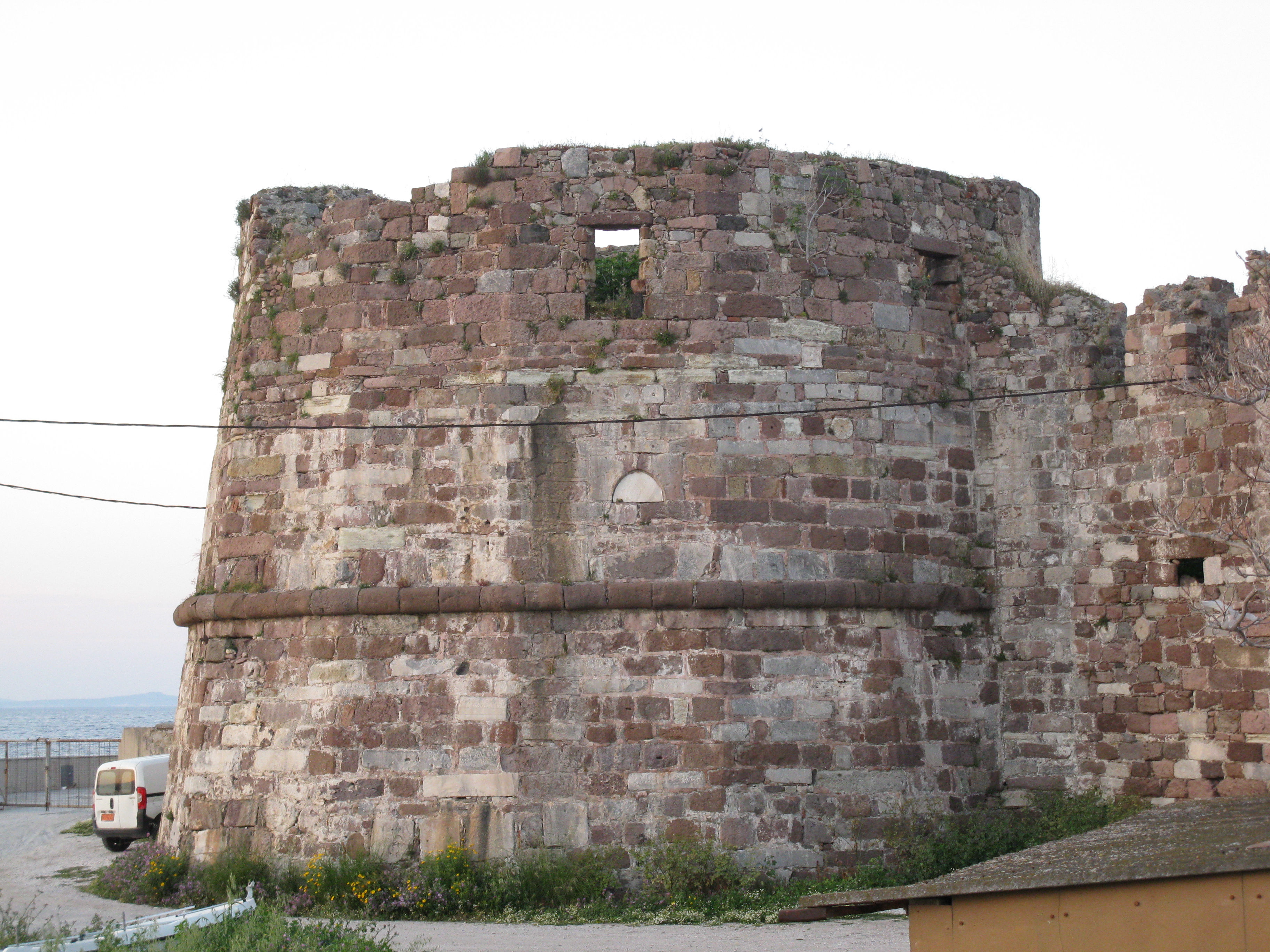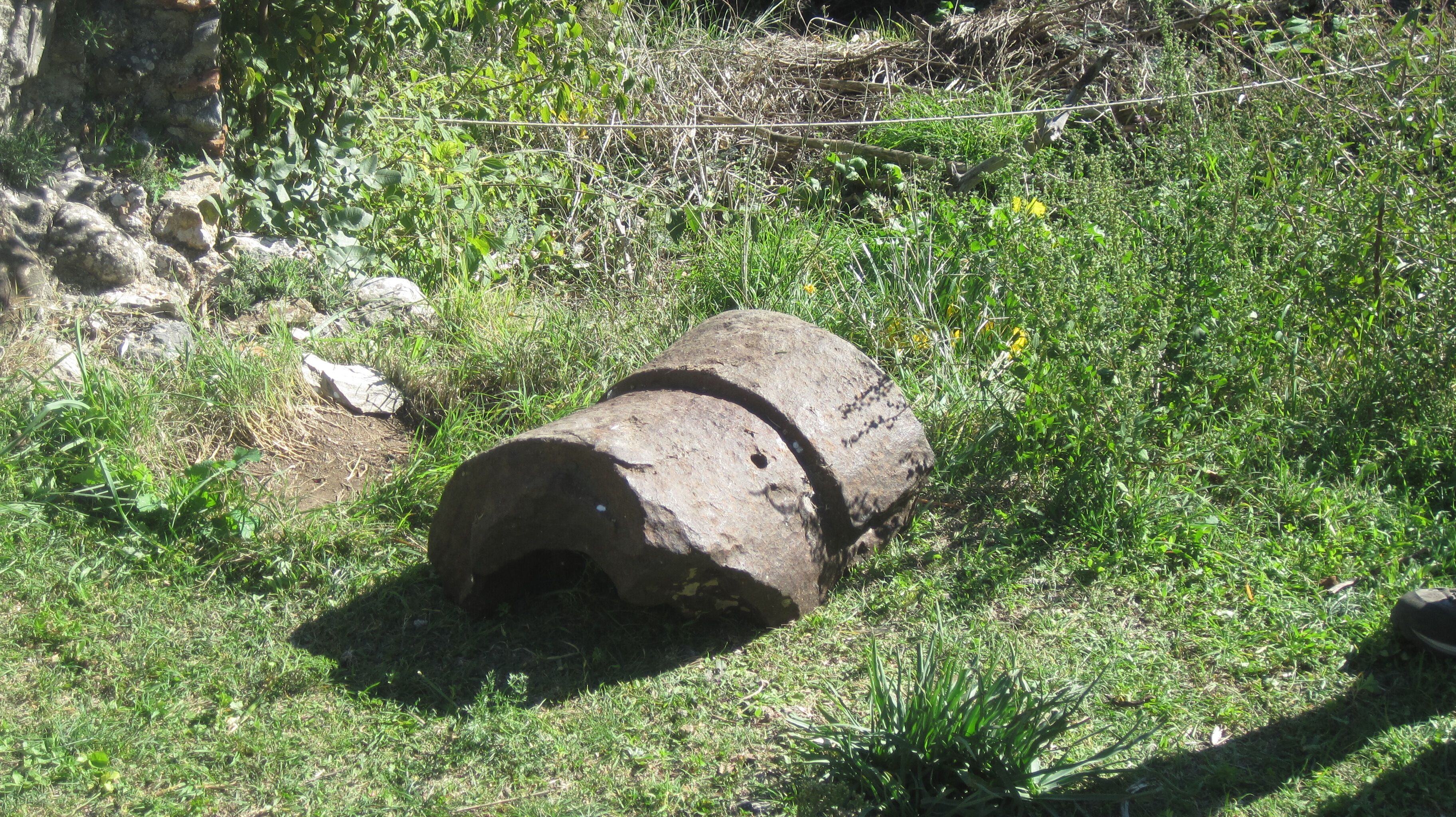
My grandmother was an exceptionally intelligent woman who was passionately interested in antiques. I’m pretty sure I got my love of antiques from her, and possibly even my passion for authenticity and material culture.
She was also very cheap. Or rather, she liked a bargain. She had a whole theory on how to search for and purchase antiques. Her theory was that you wanted to find an area that had been prosperous during the period you wanted; say, the late 18th century (her favorite). And then, ideally, was much less prosperous afterwards, so that the area kept its old chairs and didn’t refurnish all its houses; so the nice early pewter and good Sheraton and Hepplewhite furniture was still, so to speak, sitting around. Used, but loved, never thrown on the rubbish heap.
A few years ago, I became interested in early examples of military architecture purpose built for cannon. I was fascinated by the development of the bastion trace or ‘Trace Italienne‘ system and I’ll note, snarkily, that the author of the Wiki who thinks that Trace Italienne and the star fort are the same is… well, not seeing the same development path I see. Anyway….
I have a book that says there are ‘few, if any, surviving examples of round gun ports and early gun positions left in the world.’ I happened to read this comment while on vacation in Greece, and I stood at Mytilene on Lesvos and laughed, as the whole fortification, built in 1462 and ‘renewed’ by the Turks around 1470, is riddled with round gun ports and very early ‘bastions.’ I thought I’d found something exceptional.

Actually, what I’d found was the military history equivalent of my grandmother’s theory on antiques, proved large. It turns out that Greece is a place where the very best, and most expensive, Italian military engineers available to the two richest states in the Mediterranean and perhaps the world, Genoa, and Venice, built dozens… maybe HUNDREDS, of fortifications in the years between 1440 and 1470. And then it all collapsed; within a decade, virtually every Genoese and Venetian possession had fallen to the Turks for complex sociopolitical reasons that good fortifications could not prevent… The Turks didn’t need a lot of the forts, so they just sat there. Like a good Heppelwhite chair in an old logging town, waiting to be collected.
But sometimes, doing research has a comic element, and Medieval gun positions provided one of the very best.
A week ago, I was on tour with my friends. It’s called the Pen and Sword tour; and we visit fortifications and battlefields and.. wineries and really good restaurants. And ships… archaeological sites… almost any bar that serves mastika…
I digress.
We all enjoyed Mistras (last capital of the Byzantine Empire; a city that towers over the plain of Sparta; one of the world’s coolest places; my bet for the real life Minas Tirith) so much last year that we decided to visit again. And, rather like re-reading a favorite book and finding something you missed the first time… we were coming down the steep stairs when Jevon Garrett told Stephan Callahan something about a ‘gun position’.

I came around the corner and there was a beautiful example of a very early gun position; round topped, slightly sloped. The site has a likely terminus ante quam of about 1462, so the gun position has to be pretty early. I was just looking at it, and the incredible view down over the lower town and gates, when Stephan (or maybe Jamie Harrison) said, ‘And here’s the gun.’
Indeed. Lying right there was a large section of the (probably exploded) breech of a welded, not cast, Medieval gun. No marker, no tag. Just… sitting there.

Wow. It even has the touch hole, which rather ended discussion of whether this was really part of an original medieval gun we’d found on the ground by the gun position.

The close up…
OK, comedy aside, it’s actually exciting and rather moving to realize you are looking at multiple artifacts that, together, actually tell a story. I don’t know what the story is; that gun may have sat in the rain, decorating the road, until the 1770s when the inhabitants of the town, misguided, tried to revolt against the Turks under the impression that the Russians would save them (who could make this up?). Maybe they tried to fire the gun; it would have been 300 years old and riddled with rust on its welded (not cast) seams. Or maybe it was so bad that it exploded in 1462. Maybe the Turks blew it up after taking the place, because, (as you see when you stand there) it was just too hard to haul it down the hill… That was a big gun. I’d peg it around the 24 pound bore size.
The best moment, however, came when we read the sign, located about 5 meters from the gun position.

No. Really. Top notch job, Ephorates. Note the part that says ‘only be seen in large, coastal, Venetian castles.’ This was the capital of Byzantium, friends. Venice only got here in the person of Malatesta, in 1464…
And while we’re on the topic of guns; Stephan Callahan (again) arrived to the Pen and Sword tour from Venice. He had a great time in Venice, but his complaint, reiterated several times, was that ‘Venice has lost its military history.’ I remember this too; lots of carnival masks; no memory of an overseas empire and a giant fleet and marines and everything.
In fact, by one of those odd acts of nerdy serendipity, we were talking about the paucity of Venetian military antiquities as we walked along the harbor front of one of the Jewels in the Serenissima’s crown of empire; ie, Nafplion. It was sunset, on a magnificent day. I paused to light a little cigar.
Several history nerds whooped all together, the long war cry of veteran gamers, usually heard only on 28mm battlefields and occasionally in ‘Rome, Total War.’
Around a slight curve in the road was an 18th c. sea bastion; a little harbor defence for Morisini’s military masterpiece of fortification. And filling every embrasure.. or at least, five of six — was a fortune in magnificent bronze guns.
Here, enjoy some artillery porn.

These are the very stars of Venice’s arsenal; long, heavy guns, probably from Morosini’s siege train. Every one of them cast by a master; all with their names cast in. To me, they looked like 32 pounders, but perhaps bigger, and I don’t even know what the Arsenal’s standard bores were in the period 1682 (earliest gun) to 1696 (latest gun).

And of course, Naflplion fell to the Turks in 1715; another point for Nana’s theory; these guns are still where Morosini left them. And they are not in Venice, where, let’s face it, by now they’d be church bells, or tourist bric-a-brac, or probably most likely, carted away as scrap by Napoleon Bonaparte.
I think I’m a pretty good historian, for an amateur; but I would never have thought to go to Greece to study late Medieval fortification, and I’d have been wrong. Nor the evolution of Enlightenment fortification, and Nafplion’s high fortress is one of the most extreme and advanced pieces of Vauban-style architecture in the world. Leaves Fort Ticonderoga cold. As good as Louisbourg. Which, come to think of it, is in Canada; because most of the great French examples are wrecks due to other wars… and rebuilding of cities…
Addenda: Only after writing this blog did I look at the next picture… a Venetian howitzer.

It is too late to have done the job itself; but the one in front of the military museum wasn’t. If this was Morosini’s siege train… and it looked it… what if one of these guns was the culprit who blew a whole in the Parthenon?

My friend Doug Cubbison, a veritable artillery detective, is the man for this job. Doug?
Oh. And to increase sales and clicks… the mandatory cat photo. I have good tie ins… Morosini always had his cat with him, even in combat. Interesting, eh?

These cats live in the nunnery just below the Mistras gun position, so are probably pure Byzantine.
Oh, yes… we saw lots of Ancient Greece… the next blog will cover all that. But the gun positions were ‘world class.’ And.. well, I hope you laughed. I’m writing to the Greek Archaeological service.


such discoveries are great.
Fucking cool!